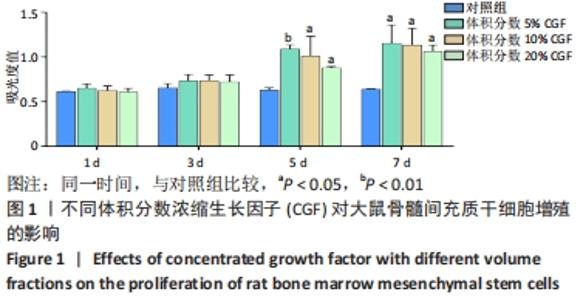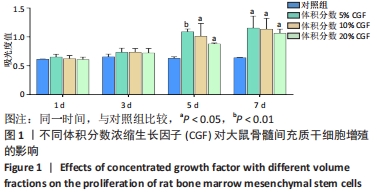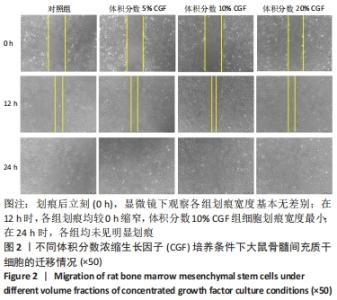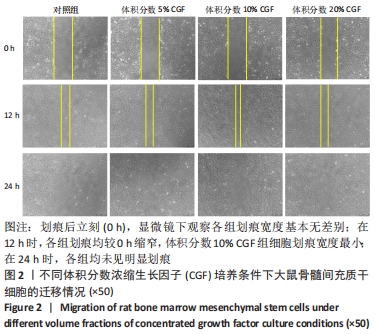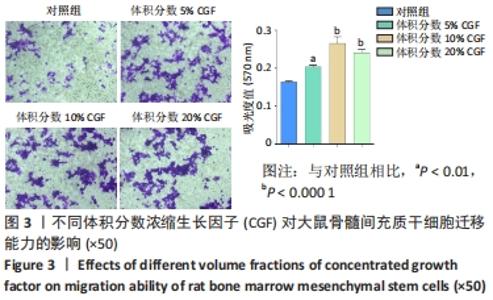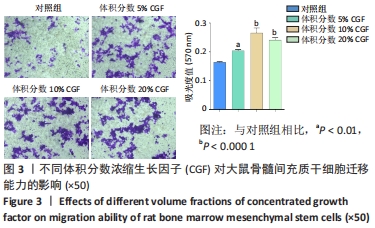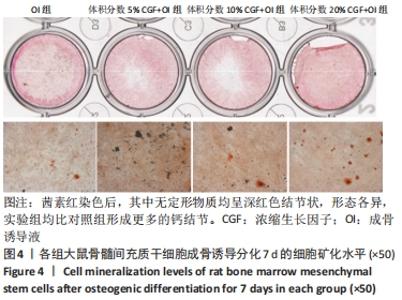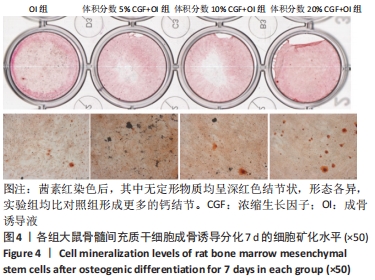[1] SUN XC, WANG H, LI JH, et al. Repair of alveolar cleft bone defects by bone collagen particles combined with human umbilical cord mesenchymal stem cells in rabbit. Biomed Eng Online. 2020;19(1):62.
[2] CUI Y, ZHU T, LI A, et al. Porous Particle-Reinforced Bioactive Gelatin Scaffold for Large Segmental Bone Defect Repairing. ACS Appl Mater Interfaces. 2018;10(8): 6956-6964.
[3] BALDWIN P, LI DJ, AUSTON DA, et al. Autograft, Allograft, and Bone Graft Substitutes: Clinical Evidence and Indications for Use in the Setting of Orthopaedic Trauma Surgery. J Orthop Trauma. 2019;33(4):203-213.
[4] HE A, LIU L, LUO X, et al. Repair of osteochondral defects with in vitro engineered cartilage based on autologous bone marrow stromal cells in a swine model. Sci Rep. 2017;7:40489.
[5] 刘杰,吴雪晖,罗飞,等. 自体间充质干细胞构建组织工程骨修复人长骨缺损的临床观察[J].第三军医大学学报,2008,30(9):851-854.
[6] KIM TH, KIM SH, SÁNDOR GK, et al. Comparison of platelet-rich plasma (PRP), platelet-rich fibrin (PRF), and concentrated growth factor (CGF) in rabbit-skull defect healing. Arch Oral Biol. 2014;59(5):550-558.
[7] HONDA H, TAMAI N, NAKA N, et al. Bone tissue engineering with bone marrow-derived stromal cells integrated with concentrated growth factor in Rattus norvegicus calvaria defect model. J Artif Organs. 2013;16(3):305-315.
[8] QIAO J, AN N, OUYANG X. Quantification of growth factors in different platelet concentrates. Platelets. 2017;28(8):774-778.
[9] HARRIS GM, RUTLEDGE K, CHENG Q, et al. Strategies to direct angiogenesis within scaffolds for bone tissue engineering. Curr Pharm Des. 2013;19(19):3456-3465.
[10] DONG QS, LIN C, SHANG HT, et al. Modified approach to construct a vascularized coral bone in rabbit using an arteriovenous loop. J Reconstr Microsurg. 2010; 26(2):95-102.
[11] 陈凯,张超,王路,等.骨组织工程中促进血管化策略的研究进展[J].中国骨伤,2015,28(4):383-388.
[12] 陈霞.自体浓缩生长因子(CGF)促进BMSCs成骨的研究[D].上海:上海交通大学, 2017.
[13] 张月,刘克达,闫明,等.浓缩生长因子联合矿化胶原材料对BMSCs黏附、增殖和成骨分化的影响及体内成骨效应[J].中国修复重建外科杂志,2021,35(3):295-302.
[14] 李琼静,罗琪.小檗碱通过激活PI3K/AKT通路促进大鼠骨髓间充质干细胞的体外迁移[J].中国组织工程研究,2018,22(29):4620-4624.
[15] KANG YH, JEON SH, PARK JY, et al. Platelet-rich fibrin is a Bioscaffold and reservoir of growth factors for tissue regeneration. Tissue Eng Part A. 2011; 17(3-4):349-359.
[16] 焦丹丹,张蒙,任贵云,等.富自体浓缩生长因子生物学作用的研究进展[J].中国生物制品学杂志,2020,33(5):568-573.
[17] CHEN X, CHEN Y, HOU Y, et al. Modulation of proliferation and differentiation of gingiva‑derived mesenchymal stem cells by concentrated growth factors: Potential implications in tissue engineering for dental regeneration and repair. Int J Mol Med. 2019;44(1):37-46.
[18] CHEN J, JIANG H. Clinical Application of Concentrated Growth Factor Fibrin Combined With Bone Repair Materials in Jaw Defects. J Oral Maxillofac Surg. 2020;78(7):1041.
[19] ÇANKAYA ZT, ÜNSAL B, GÜRBÜZ S, et al. Efficiency of Concentrated Growth Factor in the Surgical Treatment of Multiple Adjacent Papillary Losses: A Randomized, Controlled, Examiner-Blinded Clinical Trial Using CAD/CAM. Int J Periodontics Restorative Dent. 2020;40(2):e73-e83.
[20] 王瑾,张月,刘克达,等.应用浓缩生长因子促进干细胞增殖及成骨分化修复口腔颌面部缺损的研究进展[J].中国实用口腔科杂志,2020,13(1): 47-50,54.
[21] 黄贲亨,黄彬.浓缩生长因子应用于再生性牙髓治疗作用的研究进展[J].湖北科技学院学报(医学版),2021,35(2):181-184.
[22] LAI F, KAKUDO N, MORIMOTO N, et al. Platelet-rich plasma enhances the proliferation of human adipose stem cells through multiple signaling pathways. Stem Cell Res Ther. 2018;9(1):107.
[23] NAM SM, KIM YB. The effects of platelet-rich plasma on hypertrophic scars fibroblasts. Int Wound J. 2018;15(4):547-554.
[24] ZHANG XL, SHI KQ, JIA PT, et al. Effects of platelet-rich plasma on angiogenesis and osteogenesis-associated factors in rabbits with avascular necrosis of the femoral head. Eur Rev Med Pharmacol Sci. 2018;22(7):2143-2152.
[25] MASUKI H, OKUDERA T, WATANEBE T, et al. Growth factor and pro-inflammatory cytokine contents in platelet-rich plasma (PRP), plasma rich in growth factors (PRGF), advanced platelet-rich fibrin (A-PRF), and concentrated growth factors (CGF). Int J Implant Dent. 2016;2(1):19.
[26] ISOBE K, WATANEBE T, KAWABATA H, et al. Mechanical and degradation properties of advanced platelet-rich fibrin (A-PRF), concentrated growth factors (CGF), and platelet-poor plasma-derived fibrin (PPTF). Int J Implant Dent. 2017;3(1):17.
[27] SOHN DS, HEO JU, KWAK DH, et al. Bone regeneration in the maxillary sinus using an autologous fibrin-rich block with concentrated growth factors alone. Implant Dent. 2011;20(5):389-395.
[28] BOZKURT DOĞAN Ş, ÖNGÖZ DEDE F, BALLI U, et al. Concentrated growth factor in the treatment of adjacent multiple gingival recessions: a split-mouth randomized clinical trial. J Clin Periodontol. 2015;42(9):868-875.
[29] YU M, WANG X, LIU Y, et al. Correction to: Cytokine release kinetics of concentrated growth factors in different scaffolds. Clin Oral Investig. 2019;23(4):1999.
[30] WANG X, TONG S, HUANG S, et al. Application of a New Type of Natural Calcined Bone Repair Material Combined with Concentrated Growth Factors in Bone Regeneration in Rabbit Critical-Sized Calvarial Defect. Biomed Res Int. 2020;2020:8810747.
[31] TAKEDA Y, KATSUTOSHI K, MATSUZAKA K, et al. The Effect of Concentrated Growth Factor on Rat Bone Marrow Cells In Vitro and on Calvarial Bone Healing In Vivo. Int J Oral Maxillofac Implants. 2015;30(5):1187-1196.
[32] 张日媚,蔡苗,李振杰,等.浓缩生长因子提取液对牙龈间充质干细胞增殖及成骨分化的促进作用[J].滨州医学院学报,2020,43(4):297-300.
[33] YU B, WANG Z. Effect of concentrated growth factors on beagle periodontal ligament stem cells in vitro. Mol Med Rep. 2014;9(1):235-242.
[34] QIN J, WANG L, SUN Y, et al. Concentrated growth factor increases Schwann cell proliferation and neurotrophic factor secretion and promotes functional nerve recovery in vivo. Int J Mol Med. 2016;37(2):493-500.
[35] 李小菊,宋光保,杨剑珍,等.浓缩生长因子对人牙龈成纤维细胞增殖与分化的作用[J].中国组织工程研究,2019,23(21):3342-3348.
[36] 冯保静.浓缩生长因子(CGF)对人根尖牙乳头干细胞生物学特性的影响[J].口腔颌面修复学杂志,2021,22(3):171-176.
[37] 张伟祥,白雪,冯保静.CGF对人根尖牙乳头干细胞增殖分化及迁移能力的影响[J].中华老年口腔医学杂志,2021,19(3):134-139.
[38] 王亚楠,王佐林.浓缩生长因子促进牙龈软组织缺损修复的实验研究[J].口腔颌面外科杂志,2018,28(3):121-126.
[39] 张丽丽.浓缩生长因子对兔骨膜来源细胞增殖、成骨分化及成血管潜能的研究[D].沈阳:中国医科大学,2019.
|
